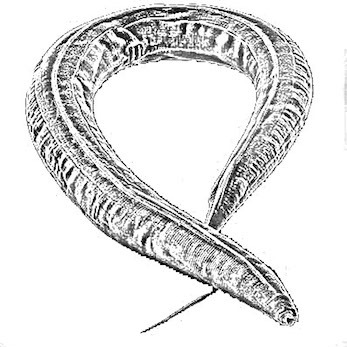Jun 25, 2020
Freezing worms
- 1Imperial College London
- Behavioural Genomics

Protocol Citation: Priota Islam 2020. Freezing worms. protocols.io https://dx.doi.org/10.17504/protocols.io.bhwfj7bn
License: This is an open access protocol distributed under the terms of the Creative Commons Attribution License, which permits unrestricted use, distribution, and reproduction in any medium, provided the original author and source are credited
Protocol status: Working
We use this protocol and it's working
Created: June 25, 2020
Last Modified: June 25, 2020
Protocol Integer ID: 38567
Abstract
Caenorhabditis elegans can be frozen and stored for long term storage in liquid nitrogen (−196 °C) and at -80C. The keys to a successful freeze are using animals at the correct stage of development, the addition of glycerol to the freezing media, and a gradual cooling to -80°C. Freshly starved young larvae (L1-L2 stage) survive freezing best. Well-fed animals, adults, eggs and dauers do not survive well. It is best to use several plates of worms that have just exhausted the E. coli OP50 lawn and that contain lots of L1-L2 animals.
Steps
Steps
Prepare at least 2 maintenance plates (60mm) with plenty of L1 and L2. The easiest way is to chunk the desired strains onto 2 plates and leave them in the 20C incubator for 4-5days (or until the worms reach a starved state with no food on the plate)
Label the freezing tubes (cryovials) with the strain name, the person freezing and the date of freezing
Add 1ml freezing solution and 1ml M9 to each plate and wash the worms off the plate
Add 500ul of the worm-M9 mixture to the individual cryovials (One plate will yield 3 tubes i.e. 1.5ml mixture in total. We add 2ml because some liquid will be absorbed in the agar)
Tightly screw the cap and mix well but gently
There will be a total of 6 tubes (3 for -80C freezer, 2 for liquid nitrogen tank and 1 for test)
Keep the cryovials in a freezing container (Nalgene isopropanol box) and transfer the box to the –80C freezer for the worms to freeze overnight
The next day take out one tube from the freezing container, thaw it and add the worms to an OP50 seeded maintenance plate to confirm that the freezing worked (If the freezing is successful the worms should start moving slowly after the liquid has dried)
Note: For successful retrieval of the worms let the tube thaw at room temperature and then add all the liquid to the seeded plate. Also rinse the tube with some M9 and add that liquid to the plate as well
Once confirmed that the freezing has worked, transfer 3 tubes to the designated box in the -80C freezer and 2 tubes to the designated box in the liquid nitrogen tank (Make sure to update the location of the tubes and their details in the database that is available in the shared folder)
Notes
Notes
You want to make sure the freezing container is filled with isopropanol up to the line, and that the isopropanol is replaced every 5 freeze/thaw cycle. The practice in the lab is to put a piece of tape on it with boxes to tick, so when it's all ticked the isopropanol is replaced
The isopropanol WILL clear off permanent marker labeling so don't tip the box on the side to avoid spillage
Also, when removing the freezing container from the -80C freezer, let it sit for a few minutes before opening the top, otherwise it's very stiff and hard to open
If you are freezing worms with extrachromosomal array pick beforehand and make sure the relevant ones are there in abundance. After thawing also pick the transgenic ones and propagate from there
Never refreeze the contents of a thawed vial
For tubes that will go in the Liquid nitrogen tank use the cryovials with O-rings
Freezing and taking vials out should only be done by the Lab manager or designated individual.
